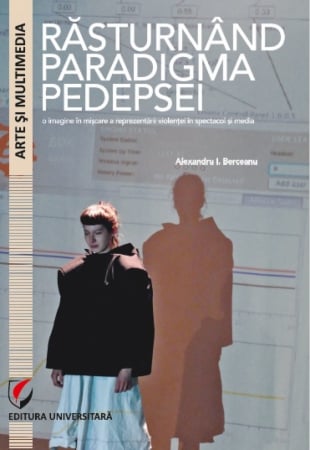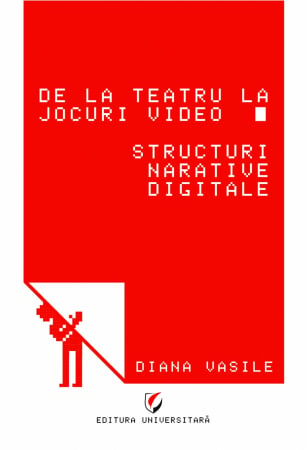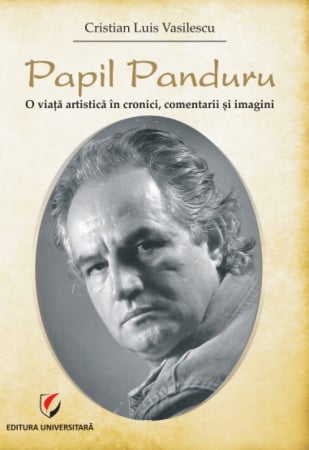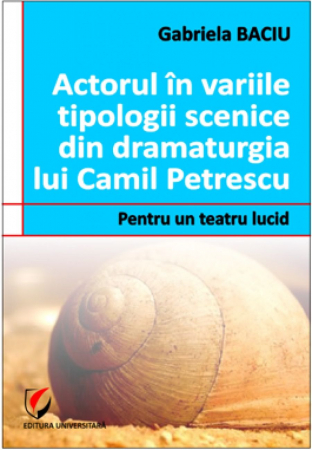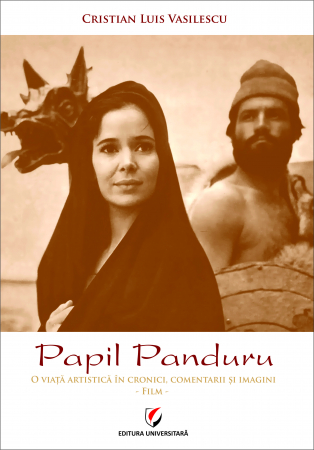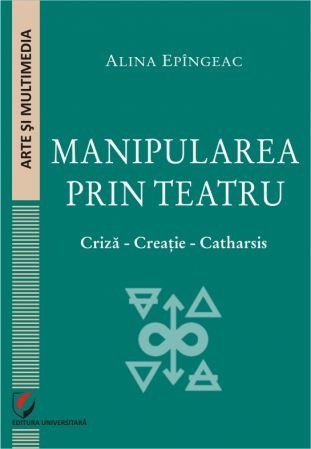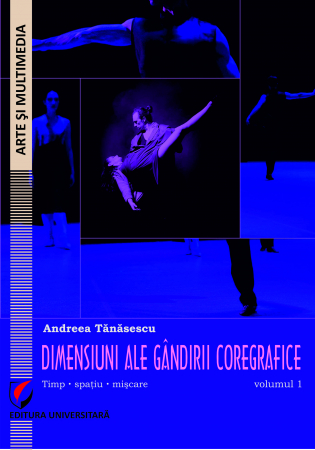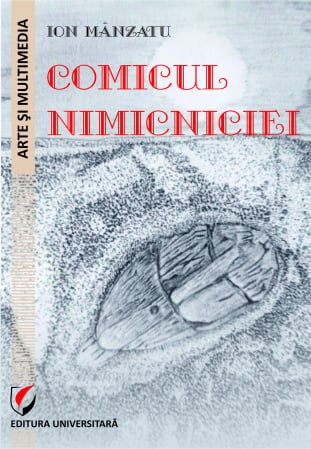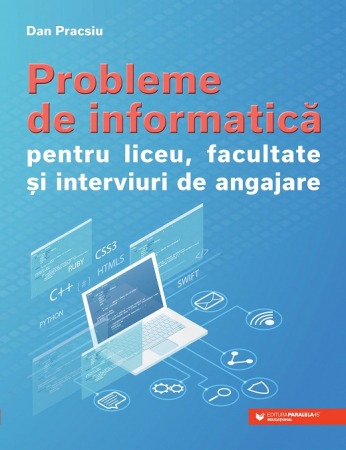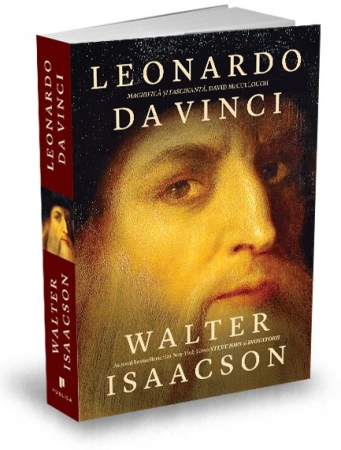ISBN: 978-606-28-0908-9
DOI: 10.5682/9786062809089
Publisher year: 2019
Edition: I
Pages: 204
Publisher: Editura Universitară
Author: Maria Elena Peici
- Description
- Download (1)
- Authors
- Content
- More details
- Reviews (0)
Question by Gheorghe Balasoiu:
- What is Maria Peici? Scenographer or Production designer?
Reply Maria Peici:
- One and another.
aria Peici claims to be both. In the older cataloging system, the set designer was the creator of the sets and costumes. That is, practically, an artist who deals with two different and complementary arts at the same time. Maria Peici successfully practiced both the sets and the costumes, and after a very laborious experience crowned with a UCIN award for scenography, which means an almost total recognition, being an award given by the guild of filmmakers, she felt the need to send us and nine from her experience, in the form of a very elaborate doctoral dissertation. After successfully passing this stage, he went on to create two volumes about scenography, written in a way that is very easily perceptible even to the general public. There are not two scenography textbooks, but there are practically two books that should exist in the library of every art lover. Congratulations!
The two volumes are very easy to navigate, they are interesting, we can find out things that we didn't even know were happening among us, in the guild of scenographers, and that's why we say that they talentfully cover a gap in our artistic life.
Prof. univ. Gheorghe Balasoiu
-
Movie Set Design. The Years 2000-2017
Download

MARIA ELENA PEICI is a film and television set designer. She signed the costumes for the films Somewhere in the East by Nicolae Margineanu, The Sleep of the Island by Mircea Veroiu, Divorce out of love by Andrei Blaier, E pericolosso sporgersi by Nae Caranfil, Fox hunting by Stere Gulea, The Tower of Pisa by Serban Marinescu, Dark asylum by Gregory Gieras, The years of Saturday night by Dragos Buliga, the scenography of the films Weekend with my Mother by Stere Gulea, The Hidden Room by Bogdan Dumitrescu Dreyer, The In-Laws by Radu Potcoava.
She created the scenography of the TV shows of PRO TV, such as The Question of the Day with Florin Calinescu, Teo with Teo Trandafir, The Craftsmen with Tociu and Palade, At Ibacka's House with Cabral, or the scenography of the concerts Michel Petrucianni (Live in Bucharest), The Blues Brothers (Rothmans Jazz & Blues Alive) directed by Ducu Darie. He currently teaches at UNATC, Scenography Workshop, film and TV directing classes, as an associate professor, together with Mr. Prof. Univ. Dr. Arch. Gheorghe Balasoiu.
She is a graduate of the N. Grigorescu National University of Arts in Bucharest and holds a doctorate in Cinematography and Media at the I. L. Caragiale University of Theater and Cinematography in Bucharest. She is a laureate of the Romanian Filmmakers Union (UCIN) with the award for the best film costumes of 1991, for the costumes of the film Somewhere in the East, directed by Nicolae Margineanu.
Preface / 11
Argument / 13
1. Introduction / 19
1.1. What is scenography? / 19
1.2. Set designer or production designer? / 20
1.3. Associations, Awards, Festivals / 27
1.4. The film and the illusion of reality / 32
2. Scenography from a theoretical perspective / 37
2.1. Realism, formalism, classicism / 41
3. Traditional scenography / 46
3.1. Brief history of film scenography / 46
3.2. The setting as a show / 67
3.3. The tricks in the classic movie / 70
4. Scenography in digital cinematography / 73
4.1. Historical conditions in the period 2000-2017 / 74
4.2. The digital revolution / 74
4.3. Internet culture / 85
4.4. Digital influences scenography / 88
4.5. American film culture / 98
4.6. Aesthetic coordinates in contemporary film / 102
4.7. Postmodernism in cinema / 105
5. The concept of film space / 110
5.1. Sources of inspiration / 110
5.2. The directorial concept / 111
5.3. The scenographic concept / 115
a. What is your point of view? / 116
b. Does the space reflect the character of the character? / 118
c. Can the scenography be valid without the characters living in the narrative? / 119
d. What is the "Reality" of the film? / 120
e. What emotional impact does the story have? / 123
f. What is the specific psychological style of the story? / 124
g. What is your attitude towards the story? / 125
h. How can architecture create a specific atmosphere? / 129
6. Visual language in film scenography / 132
6.1. Space and architecture / 132
6.2. Ambiance (Set Decoration) / 134
6.3. Props / 135
6.4. Film color palette / 136
6.5. Graphics (Graphic design) / 141
7. The stages of making the film set / 142
7.1. Documentation / 142
7.2. Sketches and models / 145
7.3. Concept art / 145
7.4. Where are we filming? / 146
7.4.1. Filming in locations. Why? How? / 148
a. Spectacular locations / 150
b. The castle as decoration / 151
c. The city as a setting / 152
d. Arrangements in locations / 154
e. Decor built in locations / 156
7.4.2. On the plateau. Why? How? / 159
a. Decoration built in plateau / 159
b. Decoration in the exterior spaces of the studios / 161
7.5. Combined films / The trick of illusion / 163
7.6. Thumbnails / 164
7.7. Composite reality / 165
7.8. CGI extensions / 167
8. New technologies / 168
9. Conclusions / 171
10. Bibliography / 178
11. Annexes / 184
1. Academy Award For Best Production Design 2000-2016 / 184
2. Bafta Awards for Best Production Design 2000-2015 / 187
12. Dictionary of scenographers mentioned in this book / 191
The book aims to decode the creative itinerary in film scenography. The analyzed period mainly includes the interval between the years 2000-2017.
What are the changes produced by globalization, and web networks, and how is the conception and realization of the setting influenced in the digital age? What are the new aesthetics that govern decisions in film and media? How do new practices influence each other in film, television and media production? What is cinematic language and how is it emotionally decoded by the viewer?
The subject of the book is film scenography in the context of the years 2000-2017, marked by the digital revolution and globalization, supported by the proliferation of the Internet. The contemporary decor is based on the traditional scenography to which it adds the new aesthetic trends and technical capabilities offered by digital and web networks. A foray into the history of film scenography provides an overview of the evolution of the setting, of the traditional methods that are the foundation on which digital builds new imaginary worlds. The theoretical structuring of the creative concepts is an attempt to order the existing tendencies in the realization of the film scenography. The approach of the creative process from concept to realization supported by numerous examples offers a pragmatic but also emotional perspective on the profession of scenographer, often confused in Romanian with that of screenwriter, due to the sound similarity of the notion.
Starting with the period 1990-2000, the way of making scenography in film and media has changed. The classic, linear way of working, which worked until then, has taken another turn and has been evolving rapidly lately. The conception of a scenographic project, the presentation of the sketches, the realization of the setting in the film, as well as the television and media one, underwent significant changes compared to the previous period. The leap produced by the accelerated pace of change can be compared to the effervescence of the early years of cinema. The premise of the changes has its roots in the period 1980-1990, and is based on technical changes induced by digital penetration, internet proliferation, and globalization, and coincides with the beginnings of my career in scenography. Although the changes occurred imperceptibly, the evolution being a natural thing, looking back we realize the amplitude of the transformations that reconfigure the coordinates of the scenographer's profession. The work proposes an external view of but also an internal research of the creative path, of the mental motivations that provoke the decisions in scenography. A fluid, and simultaneously hybrid, profession at the intersection of arts, crafts, and technique, he conducts research in the areas of history, film theory, aesthetics, and fine arts. The interdisciplinary attribute of scenography leads the study to areas of architecture, interdependent with painting or decorative arts, and the collaborative component of the profession, requires the exposure of decision-making components within the filming team: directing, image, production and trades within the Department of Art: decorators, illustrators, props, builders.
Because globalization has focused on the American film and entertainment industry that has been imposed by maximum visibility, and to delimit the area of study, I will focus mainly in this direction, the analysis period being between 2000-2017. In order to have a criterion in choosing the analyzed projects, I will select first of all the productions and scenographies whose work has been recognized and rewarded with prizes, but also productions that seem to me visually significant. It is a subjective selection, the purpose of the analysis is to identify the ways and possibilities of the current film scenography but also of the new directions facilitated by the exponential development of digital technologies. I am interested in the creative process, from concept and vision to the creation of the setting, structuring the creative process, understanding the scenographic means of a project in the 21st century, by using classic and digital elements, explaining the work stages and decisions leading to the product. final. It is a look inside the profession, revealed by interviews in which well-known scenographers share their experience regarding films of international visibility. But also an attempt to understand and structure the approach to the decor, the aesthetics that influence these decisions. In order to better understand the present, it is useful to look at the past, on the historical evolution of film scenography. The scenography works in relation to a story, it serves a script in creating the illusion of the probable reality or the fantastic. The condition of the illusion is that when it is skillfully executed, it is experienced by the public as a "natural" context of the narrative, thus its construction becomes "invisible". This invisibility of the scenographic effort makes it difficult to analyze the scenery design and the extradiegetic qualities of the designer's production and diverts attention from the scenographic creation, as a vital component in the visual architecture of the film. Specialized studies dedicated to film scenography are restricted, especially in Romania.
The paper explores the worlds we take for granted in film, it's about constructed worlds, real worlds, artificial worlds, and other kinds of worlds created in cinema. I will present various strategies for understanding them. Scenography is a complex job and, although it is associated with the realization of the physical setting, judging by the final artifact, it is not limited to that, the process of making the world of film hidden from the viewer, is an adventure in itself. The analysis draws attention to the idea, sketch, concept, communication, collaboration, organization within the team, in the production process. When we look at the scenography of the finished product, we try to identify the traces of previous decisions. As an approach, I will combine the theoretical part revealed in the books, correlated with concrete examples of case studies, based on interviews of scenographers, published in online magazines. 80% of the interview text explains "Why?" the director or the scenographer made certain artistic decisions, respectively he reveals the artistic concept, and less the actual technical mode of the execution. In fact, they communicate the code for deciphering the artistic message, the bridge between the work and the receiver. The studio can use those interested to learn from the successful experience of well-known filmmakers, it can be interesting to anyone curious to get behind the scenes of making the magical world of film. Although the essence of the film, to tell an emotional story, remained, the means of realization are constantly adjusting. This work is an "update" of the scenography / film set designer to the conditions of the 21st century. For the audience, the history of the film set is confused with that of the cinematographic techniques starting from the painted canvases to the visual effects facilitated by the digital technology. The scenography is subject to a paradox, namely: the proof of its quality is directly proportional to its degree of invisibility, to its ability to merge with the very reality of the film. The work of the scenographer is in total interdependence with that of the image director who relives through light the space he created, with that of the editor, the creator of the costumes, and the director who gives life to this little slice of fiction.
An important feature of the current scenography in the film is that it combines real elements with the digitally created ones fused by graphic cosmetics in post-production. The disappearance of the border between real / virtual / imaginary and the probing in an attempt to immerse as deep as possible in the imagination, provokes the search for other directions of artistic expression and a re-evaluation of the opera-spectator relationship, opening the way for the experiment. 3D printers, virtual reality, augmented reality, or 360-degree filming are the first steps in a new direction, still unclear. Internet culture constantly re-establishes the relationship between individual / individual / global group, space / time, connectivity, speed of information propagation, reconfigures self-awareness. This fact influences the perception of life and leads to another behavior in achieving the concept of a film, project, set, and technological advancement leads to other technical resources in the production process. The classic, linear method of producing a film is imperceptibly replaced by an explosive one, "suddenly".
"It is important to study the changes in the entertainment, film and media industries and the potential to influence each other. The appearance of a new style is revealed, which opens a new hybrid territory that unifies opposite tendencies: classic / post classic; analog / digital aesthetics; "All in the context in which the transnational and transcultural borders as well as those between the domains are blurred, forming a hybrid space that, as Homi K. Bhabha says, appears in moments of historical transformations and represents a state of inter-thing characterized by an unstable identity. and a reconfiguration of the borders .... ”.
The world is changing in many ways, it is a transition to another environment, it can be called accelerationist art or bullet time.

6359.png)
![Movie Set Design. The Years 2000-2017 [1] Movie Set Design. The Years 2000-2017 [1]](https://gomagcdn.ro/domains/editurauniversitara.ro/files/product/large/scenografia-de-film-anii-2000-2017-132-6460.jpg)

